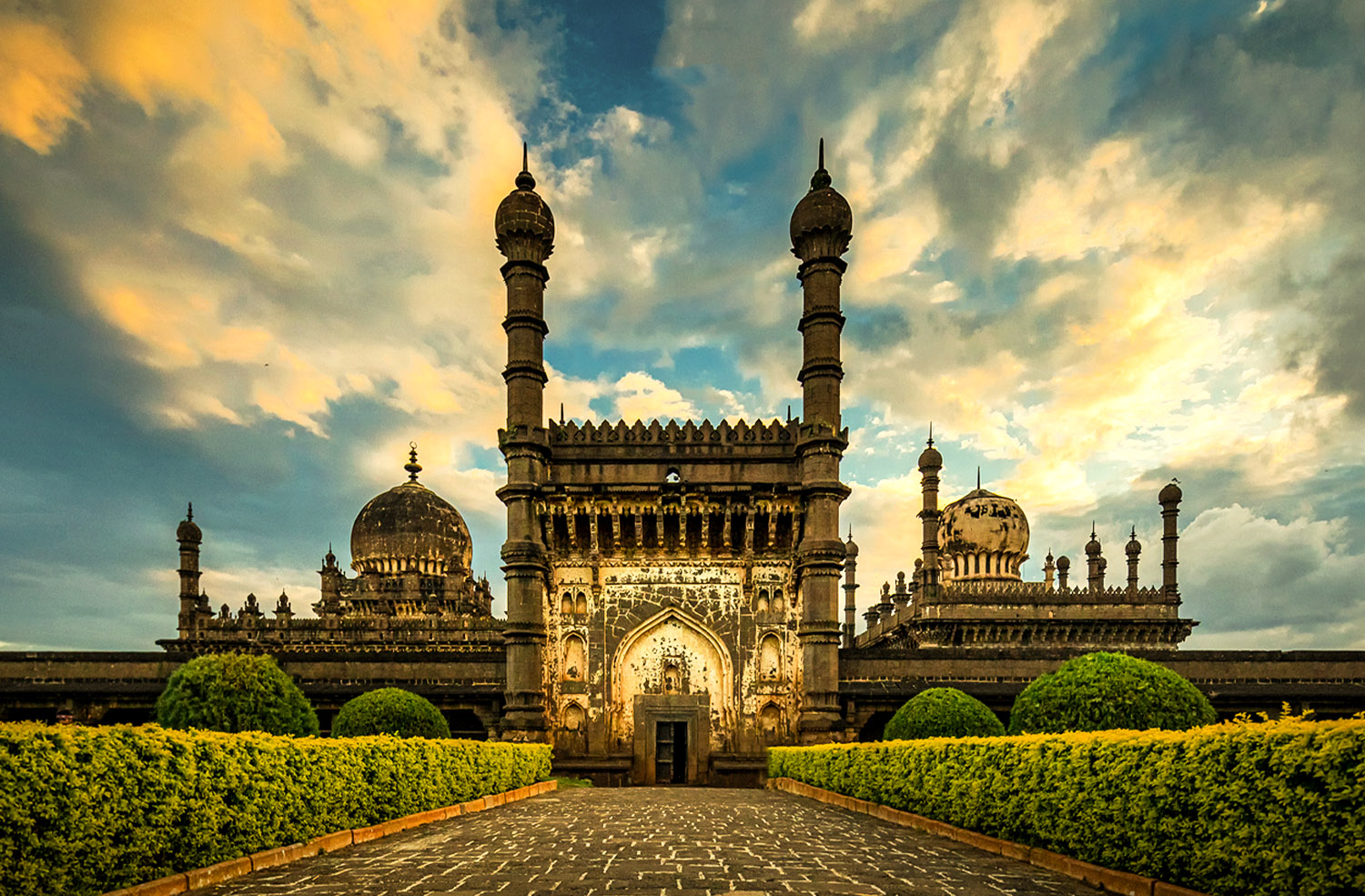BIJAPUR

ABOUT BIJAPUR:
- The ‘city of domes and minarets’ was the capital of Adil Shahi’s and is known as a ‘treasure house of Islamic architecture’.
- Chalukyan rulers of Kalyana originally founded Vijayapura or the ‘city of victory’ which came under the reigns of Bahamani rulers of Bidar in 1347.
- Yusuf Adil Shah, the Governor of Bijapur declared independence in 1481 and established the Adil Shahi dynasty.
- Adil Shahi’s were great builders and Bijapur become a centre for architectural activity.
- Town has about 50 mosques, 20 tombs and numerous palaces and it is one of the ‘classic tourism’ destinations of India.
MODE OF COMMUNICATION:
- Airport: Rajiv Gandhi International Airport, Hyderabad (HYD), 355 kms away from Bijapur city.
- Rail: Sholapur Railway Station, Sholapur, 99 kms away from Bijapur city.
- Road: Well connected by road.
SIGHTSEEING AT A GLANCE:
|
FORT & MONUMENTS |
Gol Gumbaz The Fort Ibrahim Rauza Asar Mahal |
|
HOLY CENTRE |
Jama Masjid |
|
FAIRS & FESTIVALS |
|
For more information visit https://bijapur.gov.in/en/tourist-places/
ATTRACTIONS OF BIJAPUR
Gol Gumbaz:
- It was built in 1626-1656, by Mohammed Adil Shah, as a mausoleum for himself.
- It is recognised as “one of the finest structural triumphs of the Indian builders”.
- Four minarets have four stair cases, leading to the top of the enormous dome, measuring 44 metres in diameter.
- It is regarded as the second largest dome in the world, unsupported by pillar.
- A circular ‘Whispering Gallery’ underneath is famous for its amazing acoustical system, where a faintest whisper is echoed 9 times.
- On a raised platform in the centre of the hall are the replica tombs of Mohammed Adil Shah and his family, while the actual tombs lie in a crypt below.
- Gallery around the dome affords a fine view of the city.
The Fort:
- Huge fort built by Yusuf Adil Shah-I, has relics of palaces and pleasure gardens.
- Gagan Mahal was built in 1561, as a royal residence as well as Durbar Hall.
- Sat Manzil, the seven storeyed palace of Mohammed Adil Shah and the Jala Manzil are noted for its architectural beauty.
- Another attraction is the Malik-i-Maidan, a 55 tonne, 4.3 metres long cannon of Adil Shahi’s, which is perhaps one of the largest bell metal guns in the world.
- Bara Kaman, located nearby is the incomplete mausoleum of Ali-II and is noted for its graceful arches.
Jama Masjid:
- Largest and oldest mosque of Bijapur was built by Adil Shah-I between 1557 and 1686.
- Finely proportioned, rectangular mosque is known for its graceful minarets and bulbous domes.
- Aurangzeb added a grand entrance and painted the floor with 2,250 musullahs (space for prayers).
Ibrahim Rauza:
- Exquisite group of buildings lie on the western outskirts of the city.
- Palatial mosque and tomb with delicate minarets at each corner is regarded.
- One of the most beautifully proportioned Islamic structures in the country and an inspiration for the famous Taj Mahal.
Asar Mahal:
- It was built in 1646 by Muhammad Adil Shah as ‘Hall of Justice’ and has some holy relics of Prophet Mohammed.


